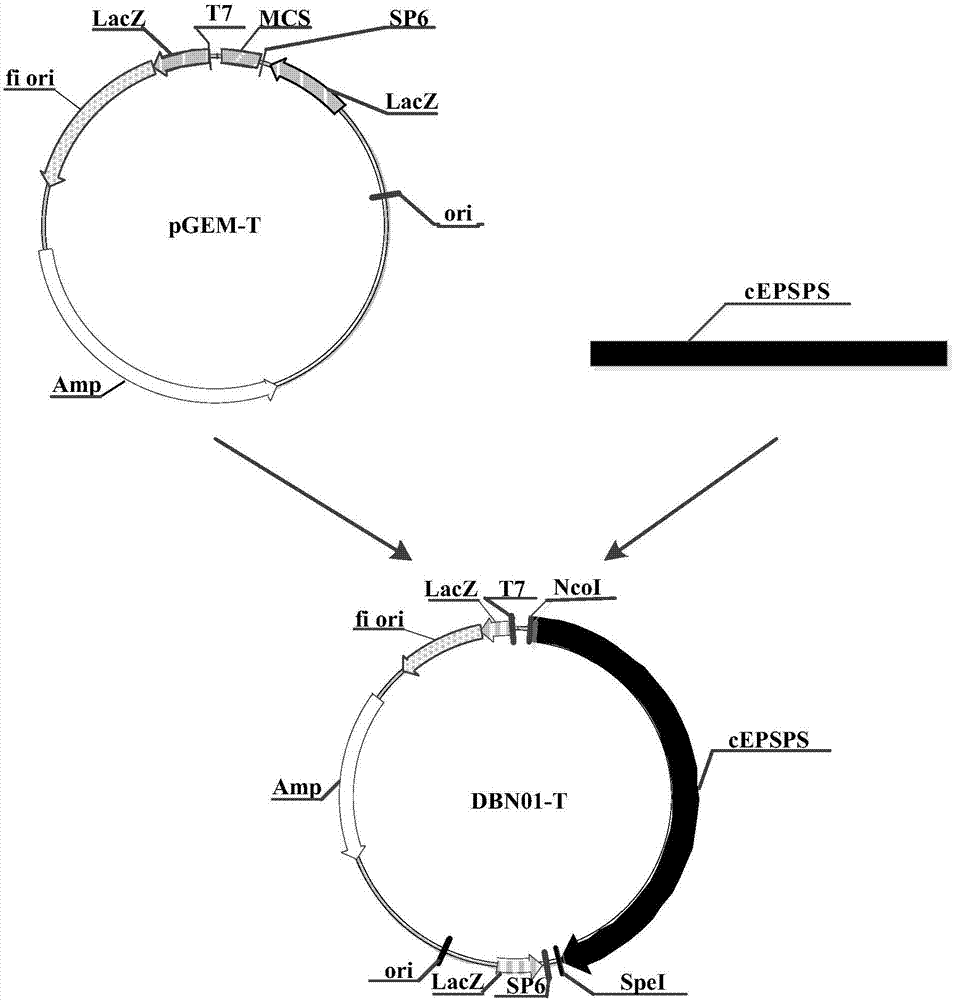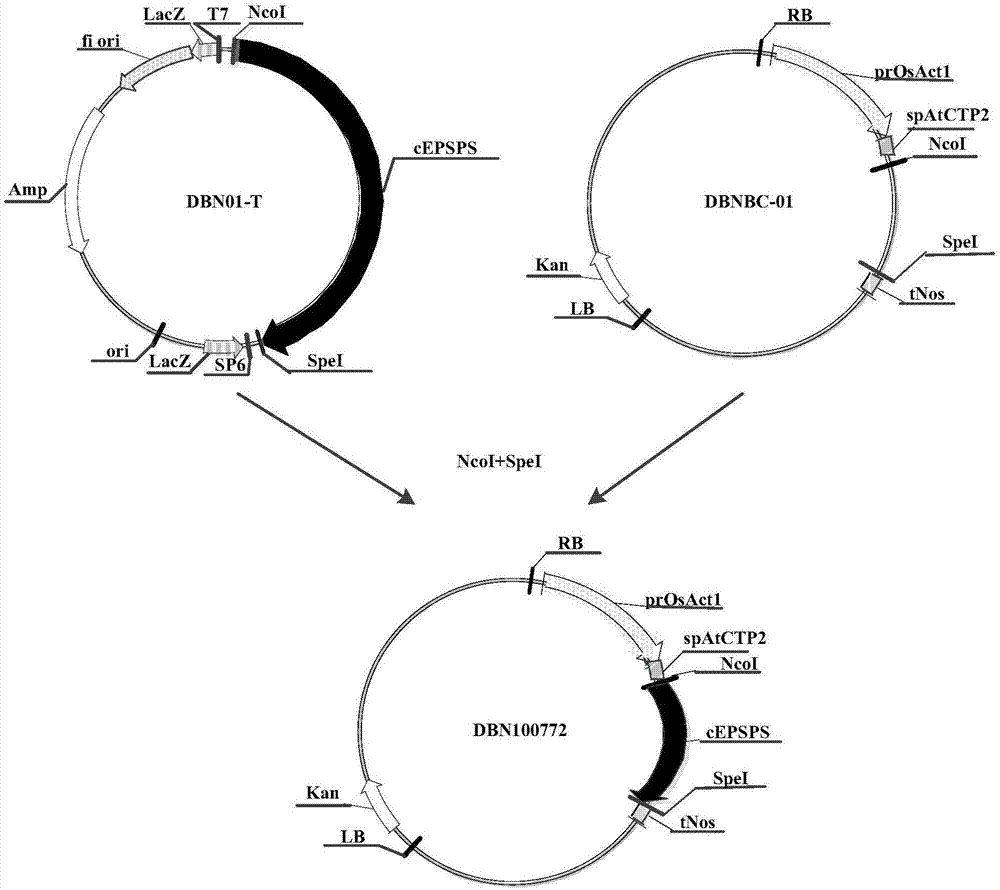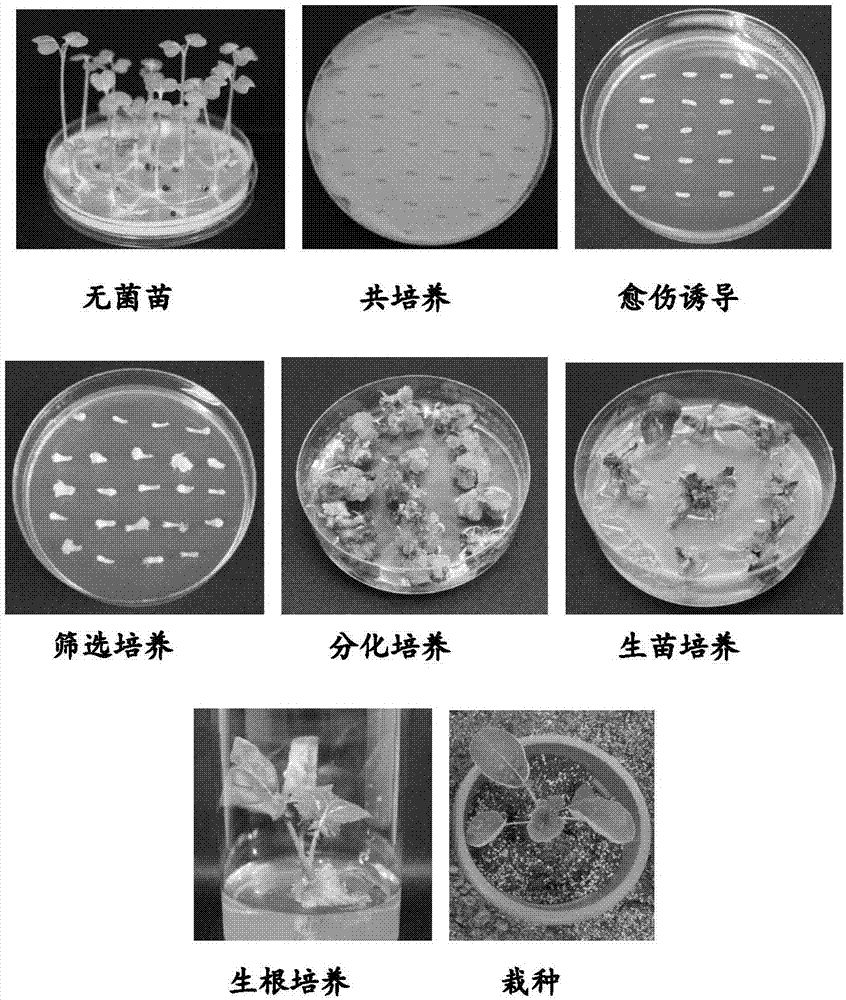Method for transforming rape
A rapeseed, transgenic technology, applied in biochemical equipment and methods, horticultural methods, botanical equipment and methods, etc., can solve the problems of low callus induction rate, difficult bud point differentiation, and difficult rooting of transformed seedlings in rapeseed transformation
- Summary
- Abstract
- Description
- Claims
- Application Information
AI Technical Summary
Problems solved by technology
Method used
Image
Examples
no. 1 example
[0137] The first embodiment, construction of recombinant expression vector and transformation of recombinant expression vector into Agrobacterium
[0138] 1. Construct a recombinant cloning vector containing the target gene
[0139] The EPSPS nucleotide sequence was connected to the cloning vector pGEM-T (Promega, Madison, USA, CAT: A3600), and the operation steps were carried out according to the instructions of the pGEM-T vector produced by Promega Company to obtain the recombinant cloning vector DBN01-T, and its construction process Such as figure 1 Shown (wherein, Amp represents the ampicillin resistance gene; f1 represents the replication origin of phage f1; LacZ is the LacZ initiation codon; SP6 is the SP6 RNA polymerase promoter; T7 is the T7 RNA polymerase promoter; cEPSPS is the 5-ene Alcoholpyruvylshikimate-3-phosphate synthase gene nucleotide sequence (SEQ ID NO: 1); MCS is a multiple cloning site).
[0140] Then, the recombinant cloning vector DBN01-T was transfo...
no. 2 example
[0147] The second embodiment, the acquisition of transgenic rape plants
[0148] 1. Obtaining of explants
[0149] Soak the seeds of Brassica napus variety westar in 70% (v / v) alcohol for 1min, then sterilize with 30% (v / v) sodium hypochlorite solution for 30min, then rinse at least 3 times with sterile water; The washed seeds were inoculated on the germination solid medium (B5 salt 3.1g / L, B5 vitamin, sucrose 20g / L, agar 8g / L, pH5.6), at a temperature of 25±2°C and a photoperiod of 16 / The seedlings were cultivated under the condition of 8h. When the seedling age is 5-7 days, the hypocotyls of the seedlings are cut into sections of about 1.0 cm and used as genetic transformation recipients for future use.
[0150] In the germination solid medium of the present embodiment, B5 salt can also be N6 salt (concentration is 3.95g / L) or MS salt (concentration is 4.3g / L), and the concentration of sucrose can be 5-100g / L Above-mentioned composition all can carry out arbitrarily comb...
no. 3 example
[0181] The third embodiment, using TaqMan to verify the rape plant transferred to the EPSPS nucleotide sequence
[0182] About 100 mg of the leaves of rape plants transferred to the EPSPS nucleotide sequence after the above two rooting treatments were taken as samples, and the genomic DNA was extracted with Qiagen's DNeasy Plant Maxi Kit, and the expression of the EPSPS gene was detected by the Taqman probe fluorescence quantitative PCR method. copy number. At the same time, wild-type rape plants were used as a control, and detection and analysis were carried out according to the above method. The experiment was repeated 3 times, and the average value was taken.
[0183] The specific method for detecting the copy number of the EPSPS gene is as follows:
[0184] Step 11, take respectively 100 mg of leaves of rape plants and wild-type rape plants transferred to EPSPS nucleotide sequences after the above two kinds of rooting treatments, and grind them into homogenate with liquid ...
PUM
 Login to View More
Login to View More Abstract
Description
Claims
Application Information
 Login to View More
Login to View More - R&D
- Intellectual Property
- Life Sciences
- Materials
- Tech Scout
- Unparalleled Data Quality
- Higher Quality Content
- 60% Fewer Hallucinations
Browse by: Latest US Patents, China's latest patents, Technical Efficacy Thesaurus, Application Domain, Technology Topic, Popular Technical Reports.
© 2025 PatSnap. All rights reserved.Legal|Privacy policy|Modern Slavery Act Transparency Statement|Sitemap|About US| Contact US: help@patsnap.com



